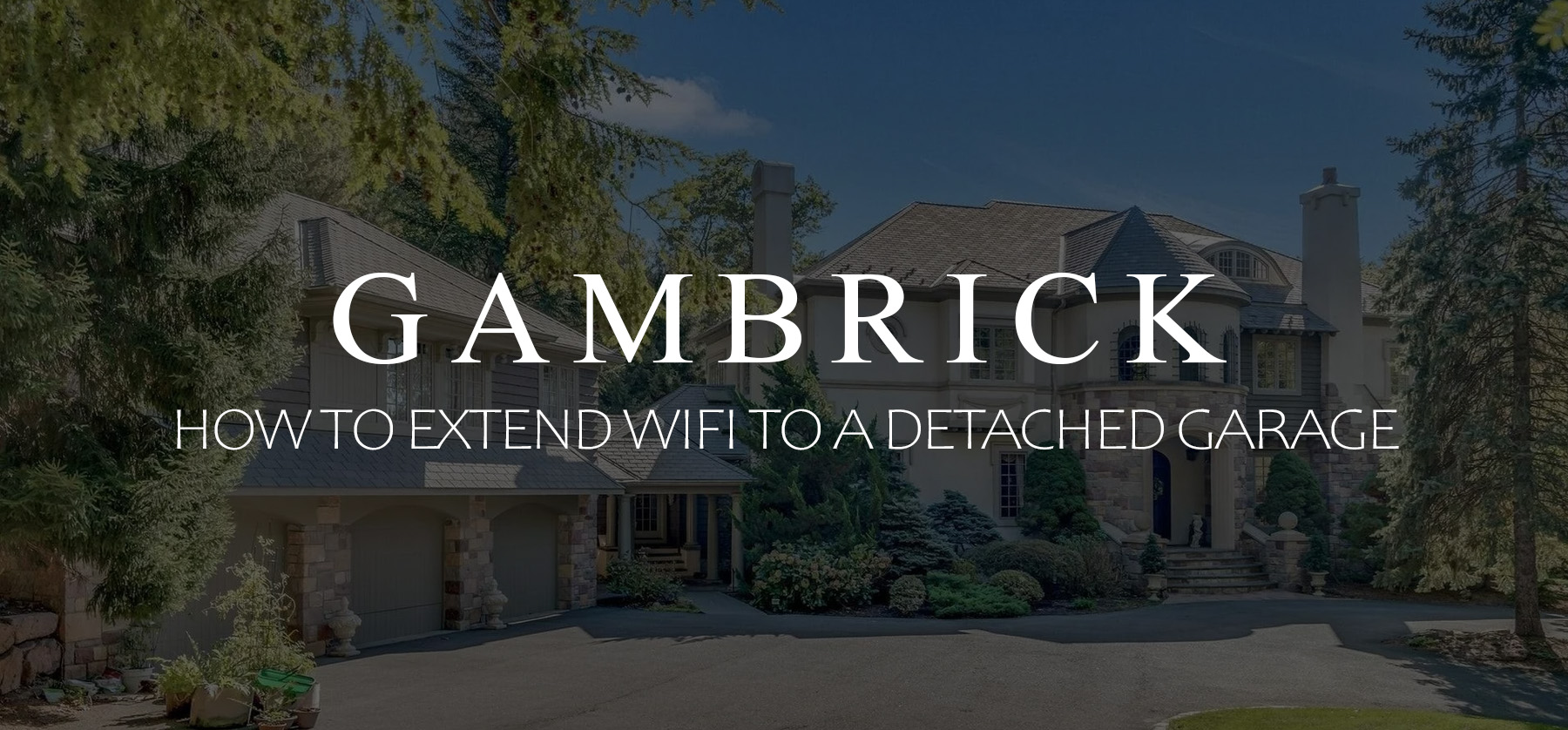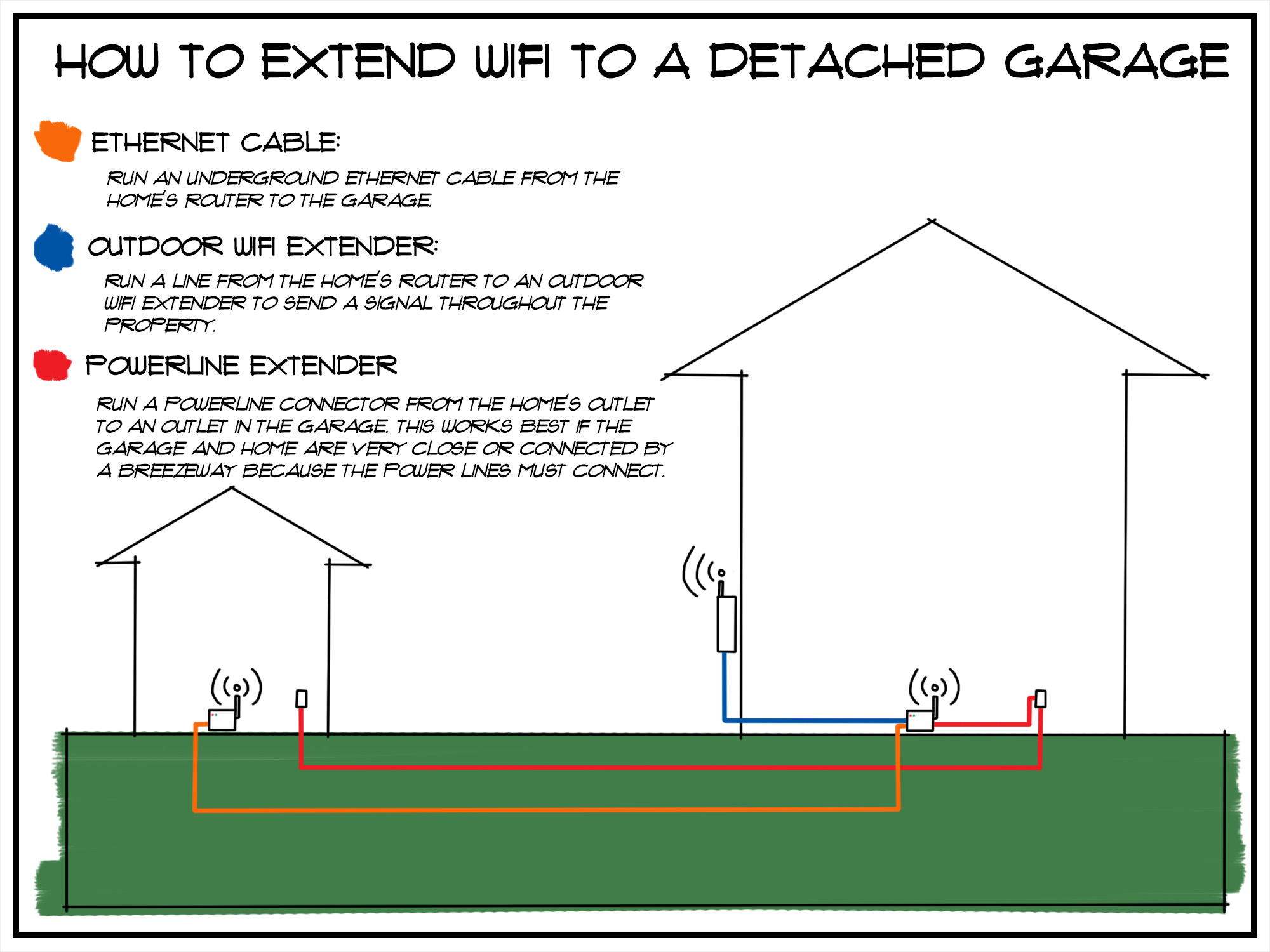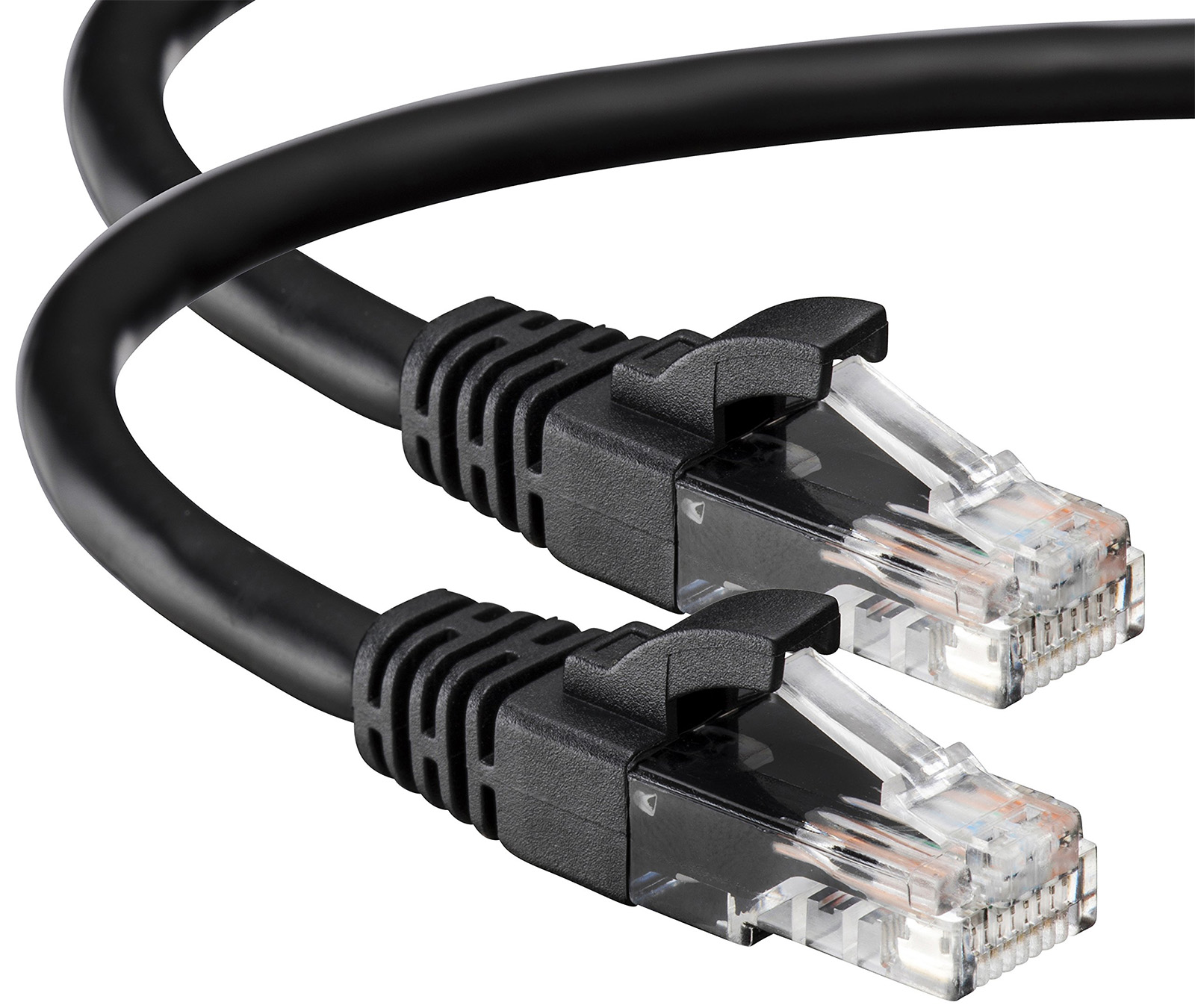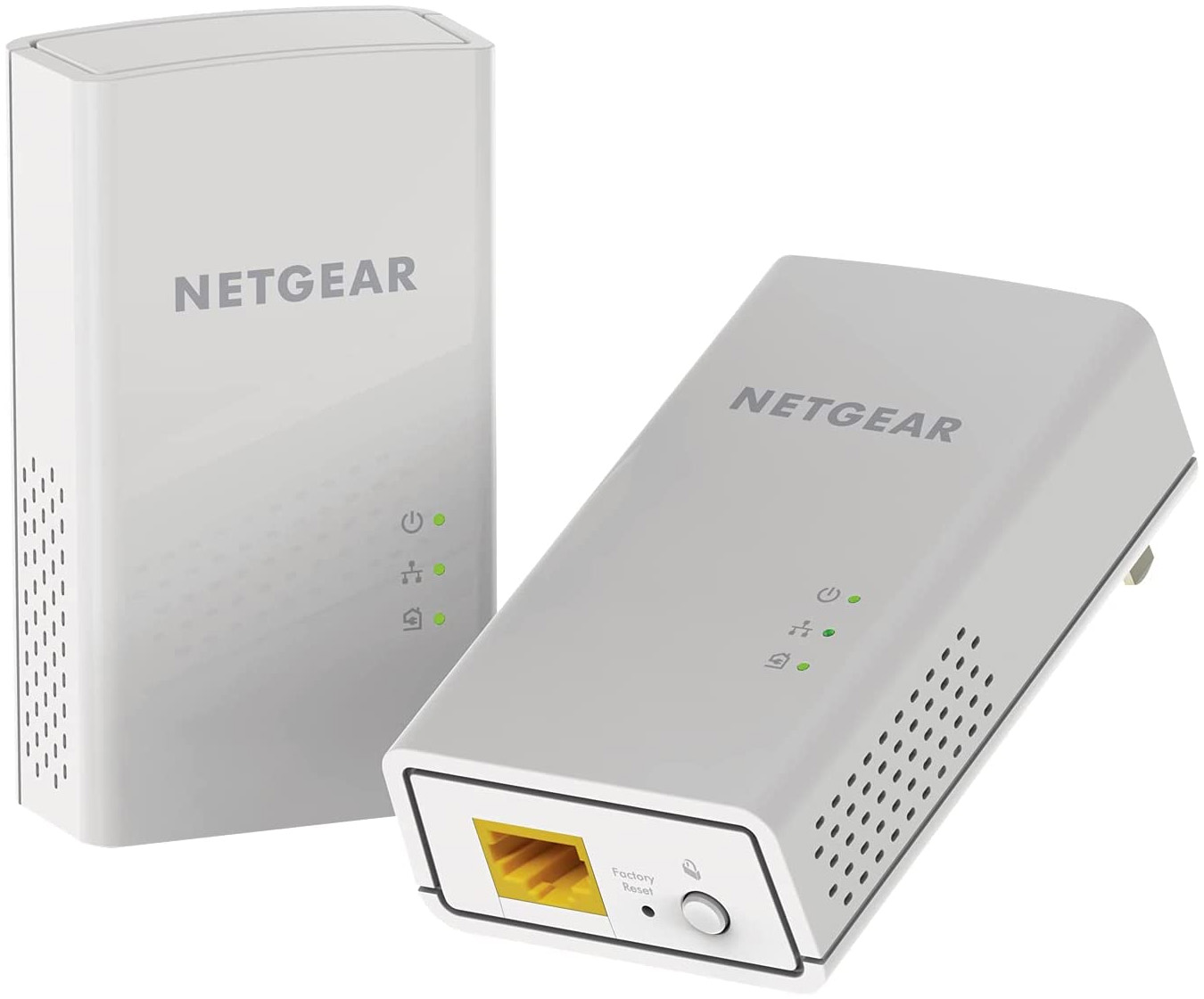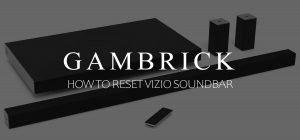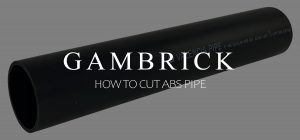How To Extend WiFi To A Detached Garage
Older homes weren’t built with Smart Technology in mind. In fact, the average home in America was built before internet or WiFi was even a thing. But these days new homes take things like WiFi and internet access more seriously. As a home builder, I consider internet access throughout a home to be just as important as plumbing, HVAC, phone, cable and electric. In fact most of our customers don’t even run traditional cable and phone lines anymore. Here in New Jersey, we build a lot of detached garages because lots are often narrow and deep. Adding internet access to a detached garage can be challenging depending on where it’s located, what it’s made out of and what’s in between the house and garage. Luckily I have some great ways to extend WiFi to a detached garage.
The best ways to run internet to a detached garage are:
- Run an Ethernet cable from the home’s main router to a garage computer or router. A hard wire is great because you’ll have full signal strength.
- Install an outdoor WiFi range extender. These are better for running a WiFi signal to a detached garage than indoor range extenders because the home’s exterior walls don’t get in the way of the signal. They’ll also extend WiFi to your entire property.
- Use a powerline networking kit.
The great thing about all 3 of these methods is that you can use them to run WiFi to an existing detached garage and they’re easy to install.
In the article ahead we’ll discuss each method in detail along with a few other important things you should know.
Problems With Detached Garage Internet
There are lots of reasons why you’d want internet and WiFi in a garage. Laptops, desktops, phones and printers all need internet. But so do garage related electronic like a WiFi garage door opener or security cameras.
I heat my detached garage to keep it above freezing and like to check it when I’m away. A WiFi enabled thermostat comes is the best way to do it. But you need an internet signal in the garage first.
Lots of detached garages also include other rooms such as a home office, gym, workshop, or even living space. These areas greatly benefit from WiFi, especially if you’ve got a computer or TV.
Unfortunately, because a detached garage is a separate structure from the house, it can be hard to run WiFi. There are a few common reasons why:
- The home’s router is in a poor location or doesn’t give off a strong enough signal.
- The walls of the house or garage block the WiFi signal.
- There are trees or other obstructions between the house and garage.
- Network, firmware or router settings are not correctly configured or is not updated.
- Outdated hardware.
- Other electronics are interfering with the wireless signal.
The most common problem I see is a blocked or weak WiFi signal. Most home routers are designed to extend a signal within the walls of a home but not outside the home.
You also have to consider the home and garage’s construction. If you’ve got concrete, brick, stone, stucco or very thick walls, it’ll much harder if not impossible for the signal to penetrate.
In almost all cases, I extend WiFi to a detached garage using an Ethernet cable, outdoor WiFi extender or a powerline networking cable. The standard household router usually isn’t good enough on its own.
Adding WiFi Internet To A Detached Garage
Running reliable high speed internet from one building to another can be challenging. Standard household routers are designed to send a WiFi signal throughout a home and have a limited range. Once the signal leaves your router, it has to travel through the exterior wall, to the detached garage, and through the garage’s walls. That’s a lot to ask from a generic router.
Luckily, there are some great solutions that I’ve used many times and work really well. They all work, some better than others, and prices vary.
Here are the three best ways to extend WiFi internet to a detached garage:
- Run an Ethernet cable from the main router to the garage. This is one of best ways to run internet from a house to a detached garage. Especially if the garage is being built new. The cable should be buried in an underground trench and housed in a conduit. Since the Ethernet cable carries the signal directly to the garage and not through the air via WiFi, you don’t get signal to the entire property.
- Install an Outdoor WiFi range extender. Another great way to run internet WiFi to a detached garage is with an outdoor WiFi extender. It can not only send the signal to your garage but also the rest of your property.
- Install a powerline networking kit. A powerline kit includes two identical devices. One adapter connected to your home’s router that you then plug into a nearby electrical outlet, and a second adapter you plug into the detached garage.
The Breakdown
All 3 of the above options work, but none are clearly the best in every situation. Here’s a breakdown of some pros and cons with each:
- I like running an Ethernet cable directly to the garage because a hard-wire provides the strongest and most reliable signal, but it requires trenching the yard and installing conduit. It’s a much bigger and more expensive job. It works best when the detached garage is new because you’ll already be excavating.
- Outdoor WiFi extenders work great and provide signal to the entire property, but are still subject to signal disruption. If you have large trees between the house and garage, the signal can be blocked. Also, it’s an electronic box mounted to the exterior of your home with a wire attached to it. Some of my clients didn’t like the look. And then there are animals to consider.
- Powerline networking kits have worked great for me in the past, but that was when the detached garage and home were close. When I tested them on structures over 100 feet away, they didn’t work very well.
If you’re considering extending internet WiFi to your detached garage, choose a method that best suites the internet strength you’ll need as well as the location of the garage and house.
Here are a few tips:
- If you have large obstructions between the garage and your house, or the garage is built out of thick concrete or other masonry, I’d run a hard line.
- However, if there are no obstructions and a WiFi signal can pass through the garage’s walls go with an outdoor WiFi extender. They’re also great if you need WiFi all over the property.
- Try a powerline networking kit if the detached garage and house are really close or connected by a breezeway.
Check Your WiFi Hardware & Settings
Before you spend any money running Ethernet cables or installing WiFi extenders, you make sure you have the proper hardware and WiFi settings. Testing your existing hardware and settings is free and fast. You may have a simple problem that’s preventing the WiFi signal from reaching your garage.
Check to make sure you have the latest software. I recommend upgrading a router and/or modem every 3-5 years because technology is always changing. You can usually go online and download the latest software in a few minutes. However, if your hardware is really old it may be best to upgrade it. In many cases an upgrade is free and included by your internet provider. But you have to ask for it.
Next, try moving the router/modem to a part of the house that’s closest to the garage. Generally, a router works best when it’s in the middle of the house, but in this case you need it closer to the garage. However this could weaken the signal to parts of the house that are now further from the router.
You can also install an interior WiFi extender. The extender will pick up the signal from the main router and project a signal. Position the extender facing the garage. Try and position the router near a window that faces the garage. WiFi signals travel through glass easier than walls.
Check your Wi-Fi configuration. It isn’t always a hardware problem. If you have the wrong WiFi settings it could be hurting your signal range. Most new routers provide multiple frequencies. I recommend buying one with at least 3.
Buy Ethernet Cables Here On Amazon
Ethernet Cables
Ethernet cables are what carry internet signals. Instead of using a WiFi signal to carry internet from your house to the detached garage, use a cable instead.
The advantage of a cable is that you get a much stronger and more reliable signal. And it doesn’t matter how far the garage is from the house. The signal will be just as strong at 200 feet as it is from 10. You don;t have to worry about wall thickness, materials, obstructions or signal interruption. If you want the same internet connection in your garage as the house, use a hard line.
The only problem with running an Ethernet cable is the cost. They’re run underground which means digging a trench between the house and garage. You’ll have to dig up the lawn, landscaping and hardscaping that are in the way. Luckily though you can snake the line around trees and other big obstructions.
The Ethernet cable and conduit don’t cost much. 100 foot of cable and conduit cost under $200 bucks. But it’s a lot of labor for excavation. A small trench can be dug by hand if the soil is soft, but if you’ve got clay or rocky soil, you’ll need a machine.
Running an Ethernet cable to a detached garage connected by a breezeway is much easier. Simply run the cable under the crawlspace or basement, under some siding or just under the soffit.
Buy A WiFi Extender Here On Amazon
WiFi Extenders
There are two types of WiFi extenders that can bring an internet signal to a garage.
Outdoor WiFi extenders are a great way to broadcast an internet WiFi signal to a detached garage. They mount to the exterior of a house on the siding. An Ethernet cable connects the extender to your router. Once connected and turned on, the extender will broadcast internet to the entire property.
Outdoor extenders are weatherproof so you don’t have to worry about rain and snow. However pests are an issue. Make sure you keep it away from animals and birds that can chew the wire.
To hook one up, all you need is a power source and an Ethernet cable running between the extender and your main router. All the mounting hardware is included with the extender. You can buy one at BestBuy for around $250.
Interior WiFi extenders work just like outdoor extenders except they’re designed for indoor use. So they’re not weather proof. Simple plug them in and connect it to your existing internet. They stretch the reach of the wireless signal coming from your router. You can use multiple extenders to carry WiFi signals over great distances. Make sure to position the extender as close as possible to the garage. Next to a window works best.
WiFi extenders vary in terms of performance. The quality of the antenna, processor and software makes some units better than others. Measure the distance between your house and garage and buy an extender that can cover the range you need.
Make the device you buy is compatible with your router. If not, you’ll have to replace the router too.
Intelligent roaming capability is a good feature. It’ll help carry a WiFi signal to your detached garage.
Buy A Powerline Network Kit Here On Amazon
Powerline Network Kit
Powerline network kits deliver an internet signal through your power lines. They’re easy to install and only cost between $50 and $100.
Here’s a breakdown of how they work:
- Powerline networking kits come with two small units that each plug into an electrical outlet.
- The primary unit is plugged in by the router/modem and connected with an Ethernet cable.
- The 2nd unit is plugged in somewhere in the detached garage.
- An internet signal is sent from the 1st unit to the 2nd through the power lines.
- Finally you attach a PC or router to the 2nd unit with an Ethernet cable.
Installation is very easy. All you do is plug one adapter into the power socket of your router and connect it to an Ethernet cable. Then, you plug the second adapter into an outlet inside the garage. Finally, you run an Ethernet cable from the 2nd unit to a computer or 2nd router.
Ive used powerline networking kits a few times with varying results.
Here’s what you can expect:
- If the house has good wiring the adapters will work better. Line quality effects signal quality because the internet signal is running through the power lines.
- The detached garage has to be on the same electrical system as the house. if the lines don’t go from the house to garage, they won’t work.
- Distance matters. Electrical wiring isn’t designed to carry an internet signal. The closer the garage is to the house the better.
- Distance between adapters matters to. Install them as close together as possible.
Powerline adapters aren’t my favorite way to run internet into a detached garage. But in some cases they do work. I’ve had great results when the detached garage was very close to the house or connected by a breezeway. However, whenever I’ve tried them in a garage that was far from the house, over 50 feet, they either didn’t work at all or the signal quality was poor.
Why Extend WiFi Into A Detached Garage Or Outbuilding
Most people think of internet and WiFi as just being for computers. But that’s not really the case anymore. There are lots of reasons why you’d benefit from having strong WiFi in a detached garage. Here are a few:
- Garage Door Openers: Many new model garage door openers work on a WiFi signal which you can control via an app. It’s a nice feature because you can open and close the doors while your away. I use it all the time so FedEx and UPS can drop packages inside my garage when I’m away.
- Security: Cameras, lighting and video are all features I like having on my detached garage. Especially because it’s set back from the house which blocks my view of the back yard. I use the cameras not only for security reasons but also to keep an eye on my kids and the dogs.
- TV: I have a workout room in my garage with a TV but I don’t use traditional cable anymore. I need WiFi to go online and use the TV.
- Electronics: I also have a small work area in the garage with a computer, printer and scanner. All of which run on WiFi.
- Iphone: When I’m at home my iphone uses WiFi instead of a cell signal. I want that same benefit in the garage too.
- Hot Water Heater: Believe it or not my electric hot water heater has WiFi too. I can monitor it via an app on my phone and get signals if there’s a problem. It helps a lot because I never go check on it.
- Living Space: If you’ve got living space above or inside the garage, you’ll probably want the same internet service as the main house.
Summary: How To Extend WiFi To A Detached Garage
Older homes weren’t built with Smart Technology in mind. In fact, the average home in America was built before internet or WiFi was even a thing. But these days new homes take things like WiFi and internet access more seriously. As a home builder, I consider internet access throughout a home to be just as important as plumbing, HVAC, phone, cable and electric. In fact most of our customers don’t even run traditional cable and phone lines anymore. Here in New Jersey, we build a lot of detached garages because lots are often narrow and deep. Adding internet access to a detached garage can be challenging depending on where it’s located, what it’s made out of and what’s in between the house and garage. Luckily I have some great ways to extend WiFi to a detached garage.
The best ways to run internet to a detached garage are:
- Run an Ethernet cable from the home’s main router to a garage computer or router. A hard wire is great because you’ll have full signal strength.
- Install an outdoor WiFi range extender. These are better for running a WiFi signal to a detached garage than indoor range extenders because the home’s exterior walls don’t get in the way of the signal. They’ll also extend WiFi to your entire property.
- Use a powerline networking kit.
The great thing about all 3 of these methods is that you can use them to run WiFi to an existing detached garage and they’re easy to install.
If you have any questions or comments about concrete walls, email any time.
